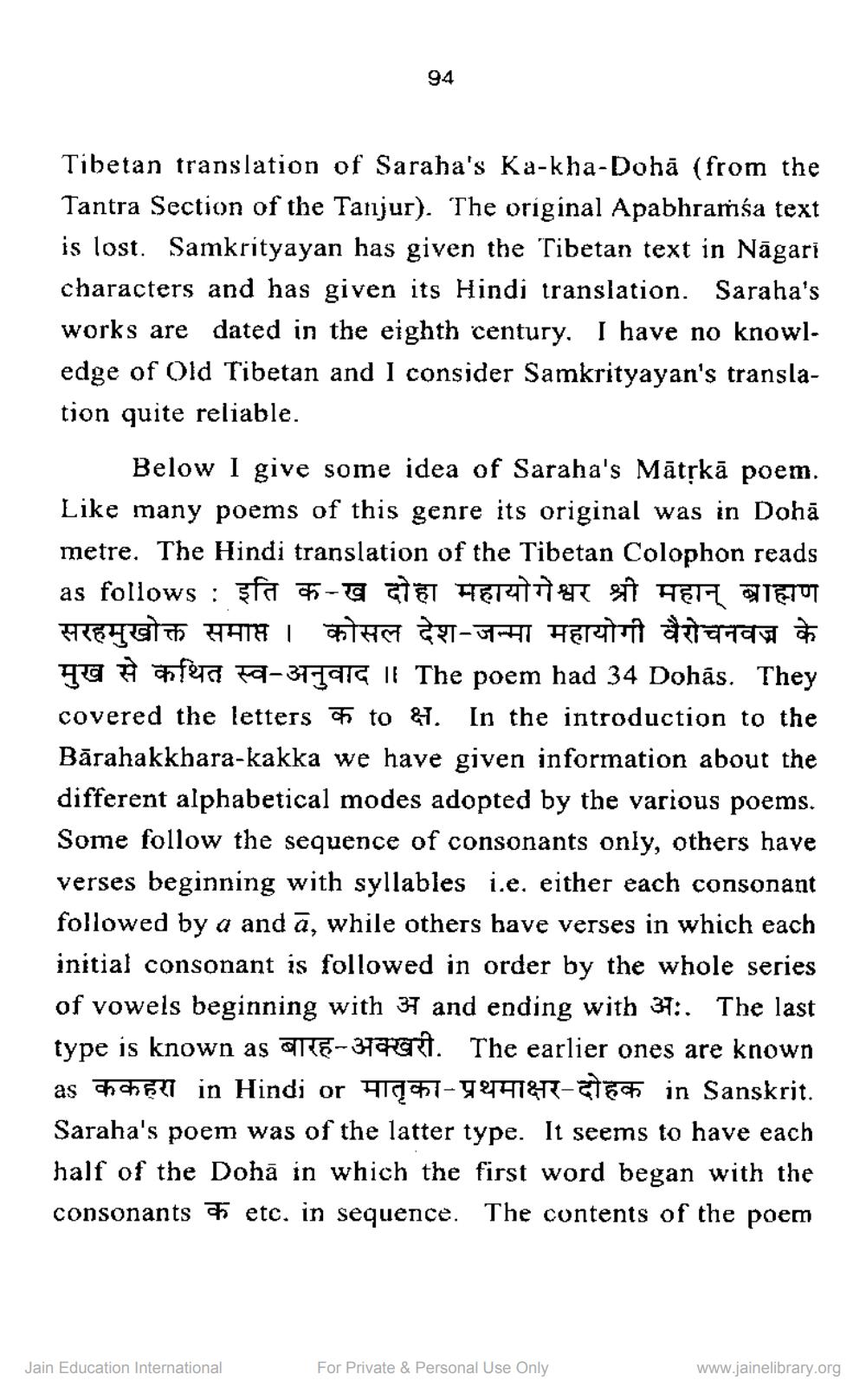Book Title: Some Notes On Buddha Sahajayani Siddha Natha Tradition Author(s): H C Bhayani Publisher: ZZ_Anusandhan View full book textPage 2
________________ 94 Tibetan translation of Saraha's Ka-kha-Dohā (from the Tantra Section of the Tanjur). The original Apabhraṁsa text is lost. Samkrityayan has given the Tibetan text in Nāgari characters and has given its Hindi translation. Saraha's works are dated in the eighth century. I have no knowledge of Old Tibetan and I consider Samkrityayan's translation quite reliable. Below I give some idea of Saraha's Mātņkā poem. Like many poems of this genre its original was in Dohā metre. The Hindi translation of the Tibetan Colophon reads as follows : sfa --G TITT HEMAT Î HER OTTENU सरहमुखोक्त समाप्त । कोसल देश-जन्मा महायोगी वैरोचनवज्र के ha afera 19-37%arg Il The poem had 34 Dohās. They covered the letters of to 81. In the introduction to the Bārahakkhara-kakka we have given information about the different alphabetical modes adopted by the various poems. Some follow the sequence of consonants only, others have verses beginning with syllables i.e. either each consonant followed by a and ā, while others have verses in which each initial consonant is followed in order by the whole series of vowels beginning with 37 and ending with 37:. The last type is known as बारह-अक्खरी. The earlier ones are known as a cheti in Hindi or 41%97-9971877-187 in Sanskrit. Saraha's poem was of the latter type. It seems to have each half of the Dohā in which the first word began with the consonants etc. in sequence. The contents of the poem Jain Education International For Private & Personal Use Only www.jainelibrary.orgPage Navigation
1 2 3 4 5 6 7 8 9 10 11 12
